
By: Zen Lynch
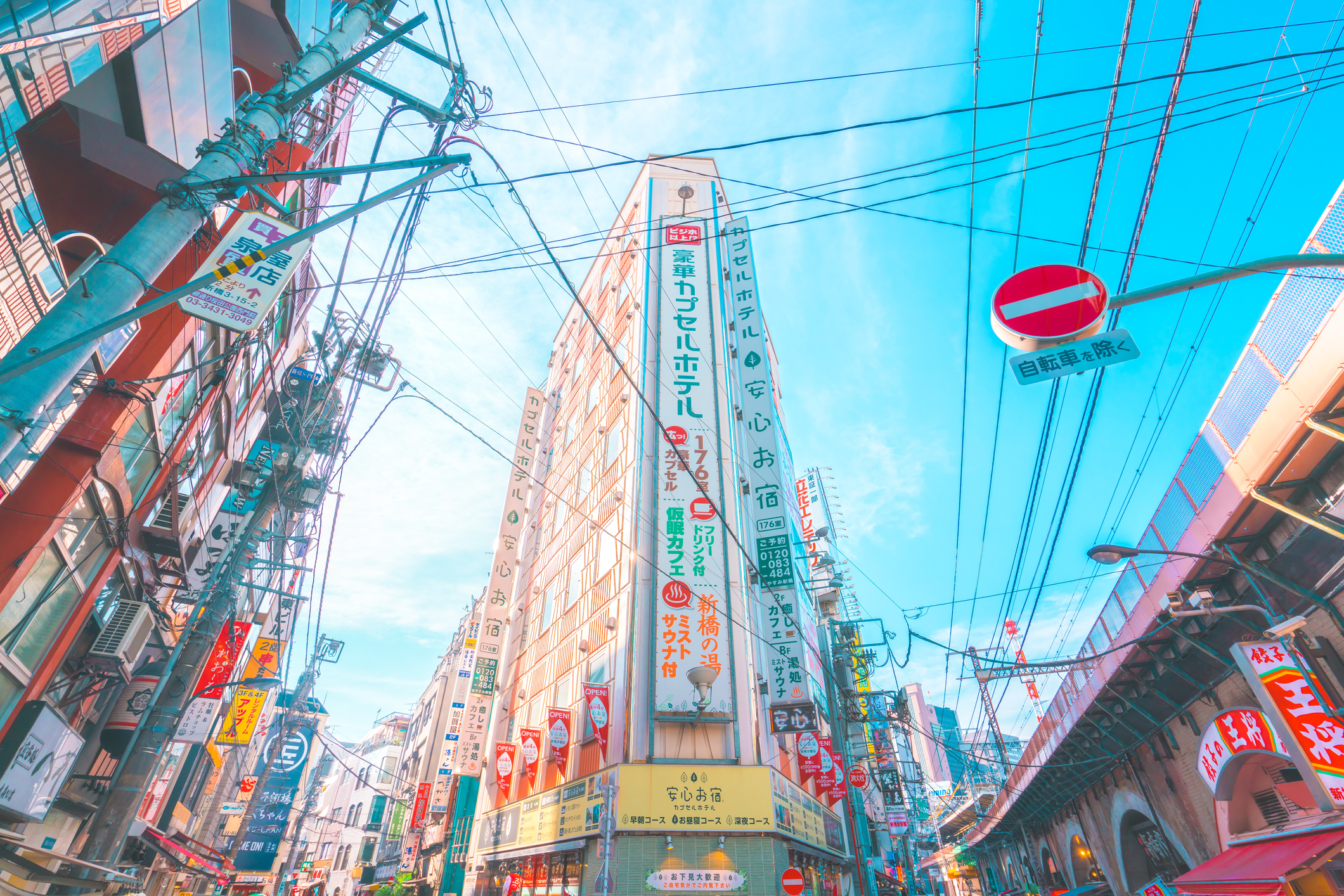
While anime in the western world has been seen as a small part of entertainment, in Japan it has a massive amount of followers which is now breaching western entertainment. Some directors and artists have broken through like Japan’s legendary animator, Hayao Miyazaki. For awhile now, his fanbase here in the US has been steadily growing. His animated films, along with others from studio Ghibli, have become staples of many American kids childhoods. Slowly but surely I, myself, am making my way through his entire body of work. My love for his films stems from when my mom, dad, and I first watched his 2001 film “Spirited Away”. For me, his films have a nostalgic element to them and factored into my decision to minor in Japanese studies in college. Being able to appreciate pieces of work in their native language is something particularly special.
Animated films and anime in general has a wide following though. There are entire streets dedicated to anime and manga where fans from around the world can experience their favorite shows up close and personal. Groups of fans can even be seen reading manga, comics or graphic novels originating in Japan, in a community setting. Anime and manga have made an immense impact in connecting people from around the world. According to The Wall Street Journal, Japanese was the fastest growing language in the US and the UK. Anime has such a profound impact on todays youth that new Japanese learners consist of 13-17 year old’s.
Museums
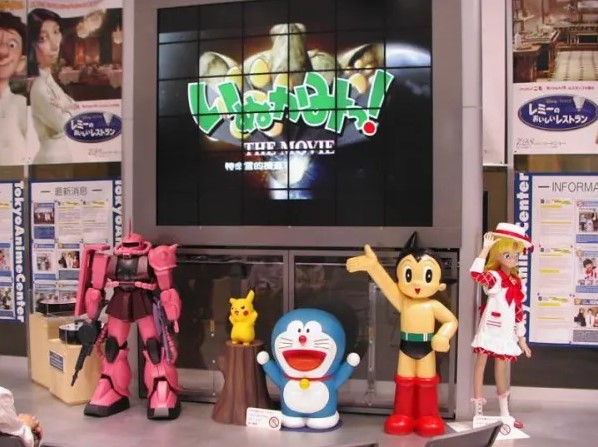
Suginami Animation Museum
With rotating exhibits and a cinema floor, this museum in Tokyo allows you to learn about the history of animation and how it developed. The museum includes a library of anime films that’s open to the public. There are vintage TV clips, interactive displays and human-sized figurines (characters like Rei Ayanami from Neon Genesis Evangelion). Through visiting you will also have the chance to do a voice-over and learn how to draw animations.
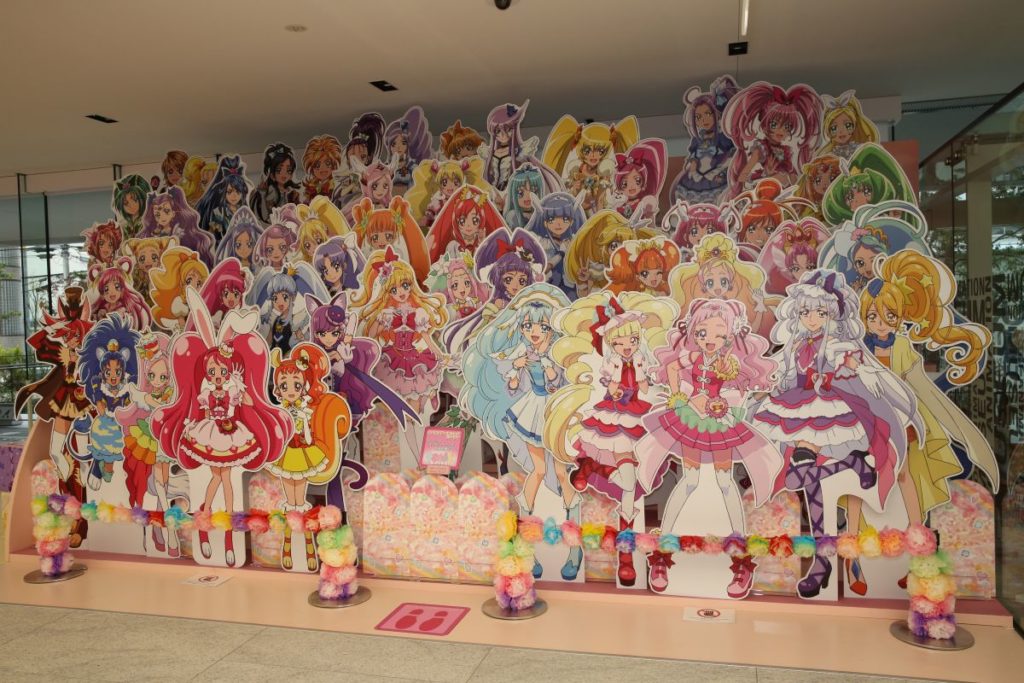
Toei Animation Museum
Toei Animation Studio was an early home to famous animators like Rintaro, Yasuo Otsuka and Hayao Miyazaki! Located in Tokyo this museum has interactive exhibits and an expansive garden where different anime characters can be seen hidden throughout the grounds. Dragon Ball Z, Sailor Moon and One Piece are all examples of Toei Animation’s work.
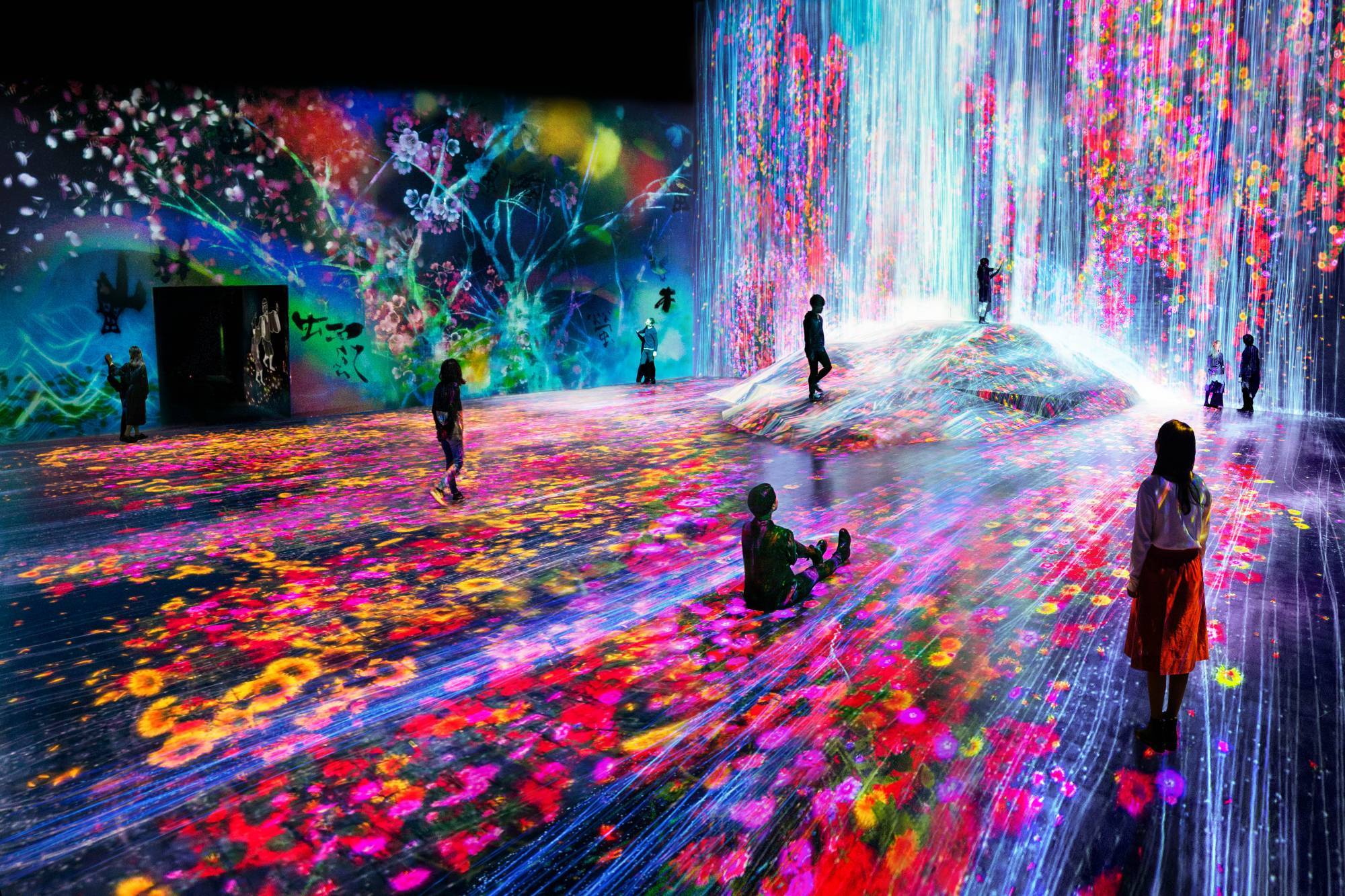
TeamLab Digital Art Museum
Japan’s art collective, teamLab is behind the world’s first digital art museum. The Tokyo based museum is split into five zones and the art is meant to dissolve the boundary between artwork and visitor through an interactive experience. The digital artwork is powered by 530 computers and 470 projectors that cause the works to transform physical space through graphics, color, and light. The various zones include Borderless World, Athletics Forest, Future Park, Forest of Lamps, and EN Tea House. Visitors are encouraged to interact with the art.
Anime Around Japan

Akihabara District of Tokyo
The renaissance of Akiba, as it is affectionately known, has taken place thanks to a steady stream of new developments and infrastructure improvements. In 2005, the Tsukuba Express train line opened a station in Akihabara, linking the electronics town to Tsukuba, the scientific research hub of Japan located in Ibaraki Prefecture, northeast of Tokyo. However, the main attraction for most visitors is the gleaming, massive Yodobashi Camera Multimedia Akiba, which is the country’s largest electronics store. Spread out over 23,000 sq. meters (about 247,000 sq. feet), the shop has a dizzying array of products throughout nine floors. One could easily spend an entire day browsing, assuming the blinking lights and the store’s theme song, which loops endlessly (in tune to “The Battle Hymn of the Republic”) does not cause sensory overload. The influence of Japanese pop culture has spread throughout Akihabara, with most electronics shops now offering manga, figurines, and game software. On weekends, the main street is closed to traffic, and people of all ages gleefully roam the streets in costumes mimicking characters from their favorite manga, otherwise known as “cosplay” (costume play) in Japan.
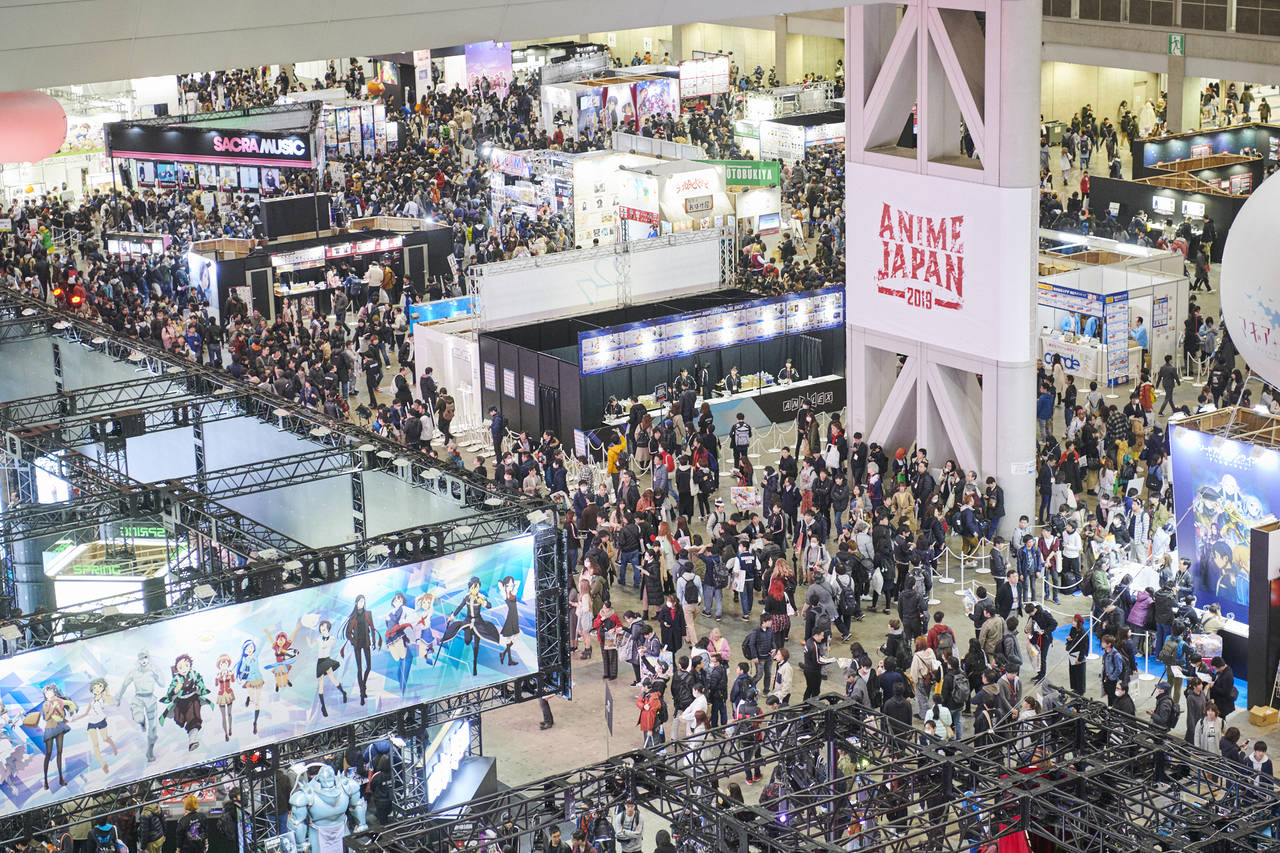
Anime Japan Expo
Held annually in March, this event attracts over 100,000 people every year. Companies like Toei animation, mention earlier, and others like it showcase what’s new to come. With a seemingly endless array of event-exclusive merchandise, mascots of fan favorite characters and life sized statues/posters this event is an anime lovers dream.

Nakano Broadway
Visit Nakano Broadway, which has many old school anime and idol shops for fans. Similar to Akihabara, Nakano Broadway has plenty of merchandise and items to geek out over. The difference between the two being that Nakano Broadway is in fact a mall with all these items condensed. Instead of one singular shop with anime items, Nakano Broadway is a series of shops. Thousands of people buy manga, collectables and anime here every week.
Emerging Media
Anime and manga have been steadily rising here in the Western world for at least the last 20 years. With the west becoming more interested in Eastern media, thanks to artist like Hayao Miyazaki, there’s a greater urge to search for more forms of media. Within this search the debate of manga versus webtoons emerges, webtoons being a digital comic originating in South Korea that’s read on smartphones.
Manga

Manga are comics or graphic novels originating from Japan. Personally I love anime, however, anime that has been adapted from manga often leaves certain plot points out or changes the translations, see my Anime, Manga & Japanese Translations blog. With manga, I am able to see/understand the details that the writer initially intended. The onomatopoeia’s, like sizzle or clap, are closely translated which allows me to add them to my Japanese vocabulary. I’m currently reading the manga Fruits Basket and the writer, Natsuki Takaya, uses every piece of space she can in order to effectively tell her story. Personally, I like to get my manga as paperback copies since they are so detailed. The downside to this is that if I want to read manga on a plane or a bus, I would have to carry the heavy volumes in my backpack. You can read manga online, however, there’s a lot of zooming in and out because of those small details I mentioned. The traditional layout of manga is not as accessible online as it is on paperback. Online manga is a little easier to read on a laptop due to the large size of the screen, but if someone wants to read it on a kindle or nook, the details would be hard to make out.
Webtoons

Due to manga’s inaccessibility in the digital age, fans of Eastern media have looked to webtoons to fill that gap. As I mentioned before, webtoons are a type of digital comic that originated in South Korea usually meant to be read on smartphones. Webtoons work similarly to manga in that they tell a story but the accessibility on a small screen is a major selling point. More and more stories come out everyday on a widely shared, organized platform. The downside to webtoons however, is that intricate plot points are hard to convey due to the limited number of words that can be on the display. I have not gotten into webtoons as of yet, but I could see it being a good outlet if I wanted to read something manga adjacent when traveling. I often find myself struggling with whether or not to pack a book on flights since I’m not sure if I will read them PLUS the added weight of the book itself. Webtoons would be a good outlet for those situations.

